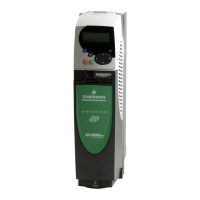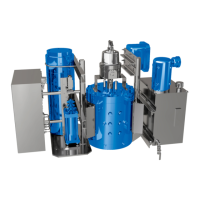Demand Control Software Overview • 5-17
and bypasses the schedule output ON. When the
Bypass to OFF input is ON, the schedule ignores
its own scheduled events and bypasses the
schedule output OFF.
If both Bypass to ON and Bypass to OFF are ON
at the same time, Bypass to ON takes priority
over Bypass to OFF.
4. DEMAND SHED - If this input is turned ON it
will turn the output of the Time Schedule to the
OFF (unoccupied) state. This input is used for
demand shedding in Power Monitoring and
Demand Control applications, and typically it is
only used when the schedule output is directly
controlling a load (lights, fans, and more).
5. Standard scheduling activities - The user
defines a “Standard Schedule” that specifies the
ON/OFF times for each day of the week, and the
ON/OFF times for the holidays/special days.
5.7.12 Control Alarming
There are no alarms associated with Time Scheduling
Control.
5.7.13 Schedule Category
The Time Schedule application provides a category for
the user to specify how the time schedule application is
used.
5.8 Demand Control
The Demand Control application monitors power
demand on a metered system (for example, main panel,
sub panel, or unitary equipment and shed configured
loads) in response to high demand situations in the con-
troller.
5.8.1 KWH Calculation
The controller has the ability to calculate energy
consumption based on:
• Analog KW Input (Analog KW signal) - When an
analog KW input is selected, the application
calculates the energy consumption on an hourly,
daily, and monthly basis by integrating the
instantaneous power samples (approximation by
finite steps). The application can take into account a
varying sampling frequency of the input signal to
produce an energy calculation.
• Digital Energy Pulse Input (Digital KWh pulse
input) - When a digital energy pulse input is
selected, the application calculates energy
consumption on an hourly, daily, and monthly basis
by accumulating the energy pulses detected on the
digital input. The digital input is able to support
energy pulse rates up to 50 pulses per second.
Also, an instantaneous power (KW) output is
calculated. This calculation uses the energy
consumed over a one minute period to calculate the
average power over the minute period.
5.8.2 Demand Calculation
Average KW (Demand) Calculation
The power company's peak demand charge is an
average KW value over an interval window.This interval
is usually in the 15 to 30 minute range, but can be as short
a five minutes. Some pulse meters provided by the power
company provides a signal that determines when a new
demand interval is starting. In general the control strategy
cannot count on this signal being available. Therefore, the
demand control window used by the application must be
set to the same value as the power company's demand
window.
Load Shedding Activation
The application integrates the power level above and
below the setpoint on a rolling demand window of the
same length as the utility demand window. That way, if the
average KW in the rolling window is kept below the
setpoint, the electric utility never detect a demand usage
exceeding the setpoint.
Once the KW input rises above the setpoint, levels
start to shed.
The amount shed depends on several factors:
• If the integral error is approaching zero, the amount
shed is the KW input minus the setpoint.
• If the KW input has been continuously above the
setpoint for 1/4th of the demand window and the
KW input is not going down, shed two levels at a
time.
• Shed one level at a time. If the KW input goes
below the setpoint, it starts to shed one level at a
time.
If the KW input goes below the setpoint minus the
hysteresis and the integral error is less than zero, the levels
start to restore. They continue to restore until the KW
input goes above the setpoint.
Demand Setpoint Determination
NOTE: There is a single licensed Demand
Control application in the controller.
Additional Demand Control applications can
be added with a separate license key.
